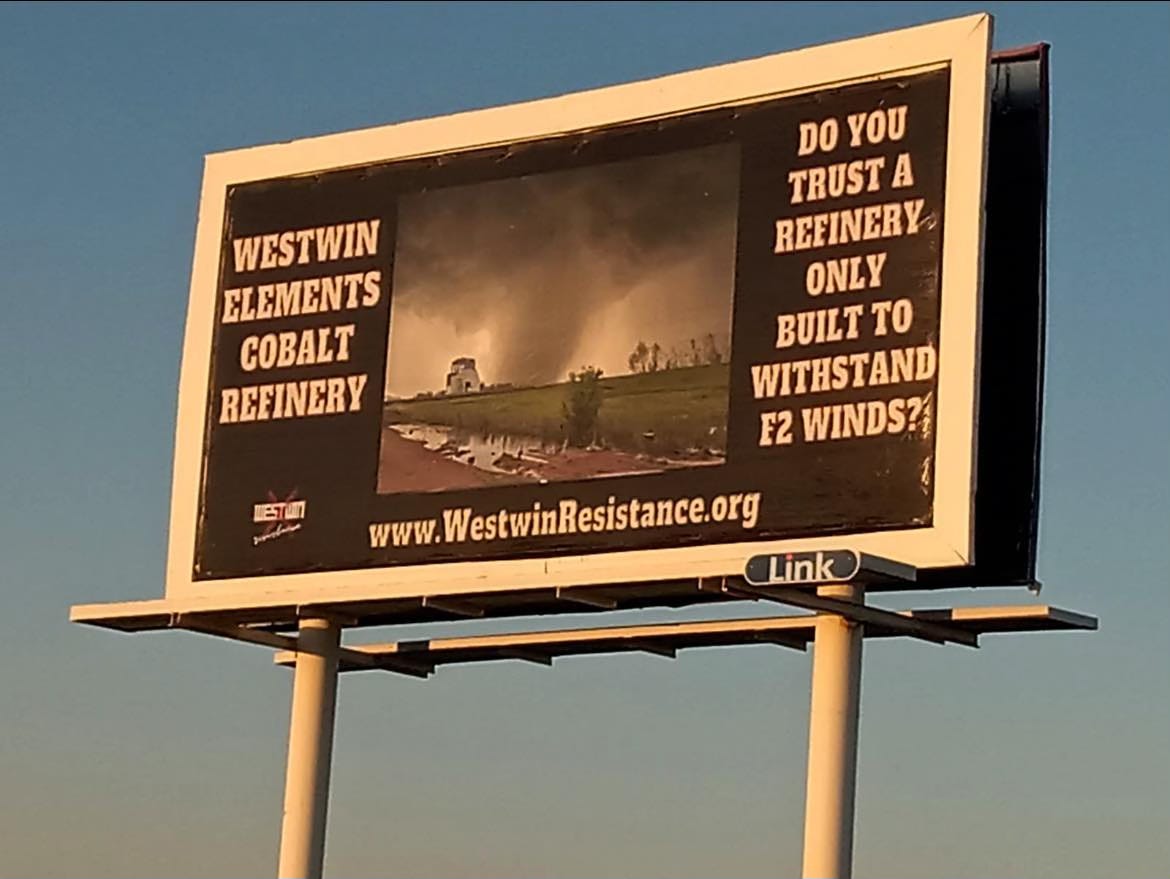Protest is a climate solution
As thousands of people protest on Earth Day today, here are some reasons why you should do environmental justice journalism too

My journey into journalism wasn’t a traditional one; instead, it was a winding climb, filled with unexpected lessons. Learning AP style felt like scaling a steep mountain, and navigating the conventions of journalism has often tested my patience. Yet, this unconventional road has shaped my voice uniquely, allowing me to see beyond mere facts and embrace storytelling as a powerful means of liberation and justice.
From the very first article I wrote for Nieman Storyboard, I recognized journalism as more than just recounting events objectively. It’s about giving voice not only to marginalized communities but also to the land itself—land often silenced or exploited. Movement journalism, particularly in the era of the climate crisis, challenges traditional objectivity by uncovering hidden truths and aligning closely with communities fighting for their lives and futures.
Every story I share aims to amplify voices that have long gone unheard, to echo the dreams of communities working tirelessly toward justice, and to speak for the land whose well-being is inseparable from our own. This is why I do what I do—because great storytelling should empower, heal, and inspire us to reimagine freedom collectively. This is why I do what I do with the Black Wall Street Times—because, thus far, this is one of the few newsrooms that has genuinely encouraged me to cover environmental justice movements; not even NPR.
The role of protest in environmental justice
Protest has always been a catalyst for change. In 1982, residents of Warren County, North Carolina, protested against the siting of a hazardous waste landfill in their predominantly Black community. Although the protest didn’t stop the landfill, it sparked the environmental justice movement, highlighting how environmental issues disproportionately affect marginalized communities.
In Oklahoma, similar efforts have emerged against industrial projects impacting Indigenous and Black communities. For example, residents of the predominantly Black JFK neighborhood in Oklahoma City have been organizing and protesting to demand stronger regulations on a local metal recycling facility. Community members have raised concerns about the frequent explosions from crushed cars, which lead to air pollution and health hazards in their neighborhood.
Additionally, in Lawton, community members and tribal activists have rallied against the establishment of a cobalt and nickel refinery by Westwin Elements, raising concerns about potential environmental contamination and a lack of meaningful consultation with affected tribes.
As a result of these protests, metals refining companies in Canada have engaged with the Lawton community to discuss the health effects of nickel refining and provide insights about Westwin Elements. This situation has raised concerns regarding the process of Tribal consultation within industries.

Similarly, the Standing Rock protests against the Dakota Access Pipeline in 2016 brought international attention to Indigenous rights and environmental protection. These movements underscore that protest isn’t just a reaction—it’s a proactive step towards systemic change.
Beyond raising awareness, protests can yield tangible environmental benefits. A review highlighted by Grist found that climate protests may even result in reductions in emissions, although these effects are challenging to study and the evidence remains limited. For instance, parts of the U.S. with lower levels of protests during the initial Earth Day in 1970 experienced higher levels of air pollution 20 years later compared to areas with better turnout.
These findings suggest that protests not only amplify voices and demand justice but can also contribute to measurable environmental improvements.
NPR's lax reporting on movements and protests
Despite the significance of these movements, mainstream media, especially outlets like NPR, often downplay or misrepresent protests. In her Substack piece, “Not Very Compelling: How NPR Dismissed the Largest Protests of 2025,” journalist Parker Molloy critiques NPR’s internal culture and editorial decisions. She writes, “According to a former NPR staffer who spoke to me on the condition of anonymity, the climate protest story was pitched for coverage and rejected, with a senior editor reportedly saying it was ‘not very compelling.’”
This perspective isn’t just a misstep—it’s a pattern. NPR’s editorial framework often treats protests as noise rather than substance, valuing proximity to institutional power over grassroots action. I experienced this firsthand when NPR barred me from covering protests in St. Louis, insisting they weren’t newsworthy. But the people there had stories to tell—urgent, vital ones about environmental harm and state neglect.
NPR often exemplifies what I call the “helicopter reporter” model: journalists who parachute into a community during a crisis, extract soundbites, and then disappear. This extractive approach leaves residents feeling unheard and misrepresented. By failing to provide in-depth, ongoing coverage, outlets like NPR risk not only delegitimizing protest but also silencing the very communities we should be listening to most closely.
Embracing movement journalism
As a movement journalist, I strive to go beyond surface-level reporting. This means immersing myself in the communities I cover, understanding their histories, and conveying their stories with empathy and accuracy. It's about recognizing that journalism can be a tool for empowerment, not just a means of observation or writing down history.
In covering environmental justice, it's crucial to highlight the voices that are out there organizing their communities for a better world and to highlight how systemic inequalities contribute to environmental degradation in marginalized communities. By doing so, we not only inform the public but also challenge the structures that perpetuate these injustices.
Protest is more than a public demonstration; it's a vital mechanism for societal progress. As journalists, we have a responsibility to portray these movements with the depth and respect they deserve. By embracing movement journalism, we can ensure that our reporting not only informs but also uplifts and drives change. It's this potential for positive change that should inspire and motivate us all in our journalistic endeavors.







Love this. Thanks for your coverage!